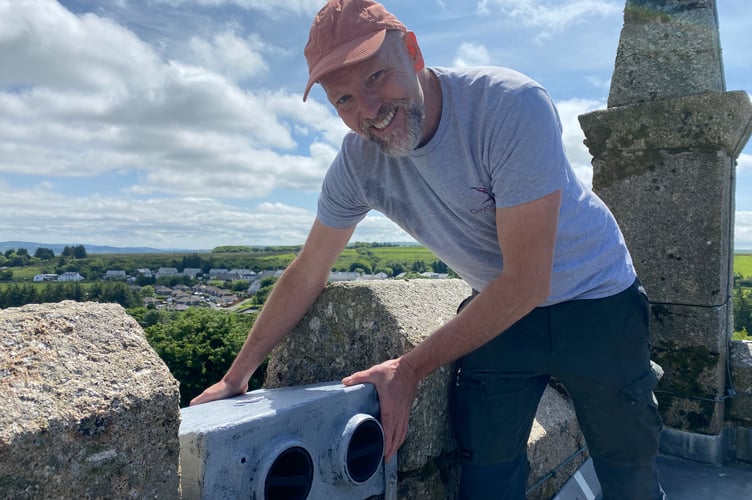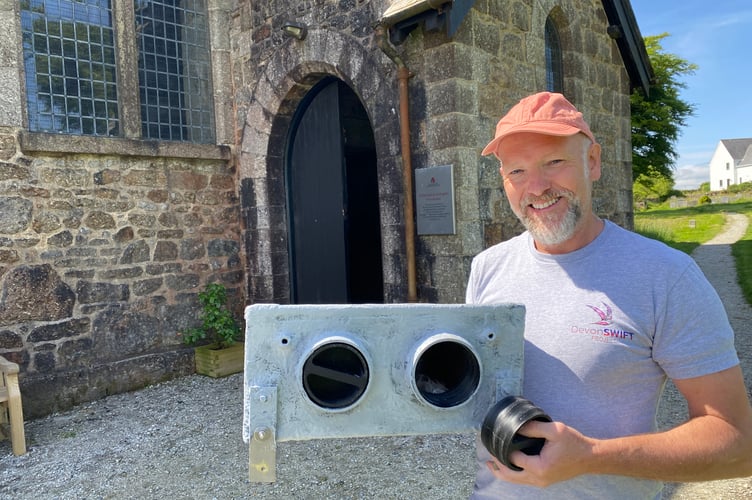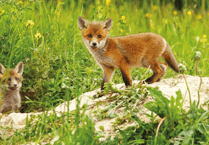A bird conservation project has chosen a West Devon village church as its latest nesting site.
High up above the roofs of Princetown on the roof of the church are the first nest boxes in the village built especially for swifts.
The project aims to support the endangered bird, which is threatened with extinction in most of the UK, by providing nesting sites.
Princetown used to have swifts nesting in older buildings under rafters and in crevices and gaps in roofs. But, in common with the rest of the country, homes are now sealed with plastic to prevent drafts for energy efficiency, which shuts out the bird.
Princetown church has been chosen because the tower roof makes an ideal safe high-up place for swifts to nest without disturbance, giving them a bird’s-eye view of a vast open feeding ground on Dartmoor.
Jerry Horn, Devon Swift Project coordinator, said: “Swifts populations have declined by 75 per cent in Devon over the past 25 years which is very concerning.
“They are a wonderful species which are amazing agile fliers. They are also the fastest bird to fly horizontally being propelled by their own strength. The peregrine falcon is the fastest in a hunting dive, but not under its own power.
“The church authorities have kindly allowed us to site 16 nesting chambers on the tower roof to help encourage swifts to return to Princetown. There was a nesting population decades ago when there were more crevices and roof spaces and eaves in which to nest.
“But newer homes and older conversions have been sealed to the elements by soffits and other plastic fittings. Older buildings tend to have more crevices and small openings, which is all they need to make a nest.
“Some churches have ventilation louvres in towers which provide ideal nesting openings, but Princetown doesn’t, so the chambers are fitted in the open between granite castellations at the top which we can also access.”
Jerry will then fit a sound recording of a pair of swifts (which are nesting at his home), to the church to signal to juvenile swifts that there are others in the area an therefore, to keep away.
Jerry explained: “This might seem contradictory to fit this recording of swifts deterring others. However, the outcome is to effectively signal the presence of nesting swifts which will hopefully, result in encouraging swifts to adopt the church as a home when the nesting pair leave. The net result should be a healthy population of swifts returning year after year from migration.”
Jerry has been working with the volunteer churchyard maintenance group. Gary Easton, volunteer member, said: “We’re very proud to be home to the swift project’s latest nesting site.
“The aims of the project very much fit into the aims of the churchyard group which is to be a home to wildlife which we encourage with our insect-friendly planting.
“The churchyard is increasingly bio-diverse with more insects which encourage birds. Swifts feed off insects too, so we hope they will feel at home on the church tower.”





-is-praised-for-her-imaginative-shop-wind.jpeg?width=209&height=140&crop=209:145,smart&quality=75)
Comments
This article has no comments yet. Be the first to leave a comment.